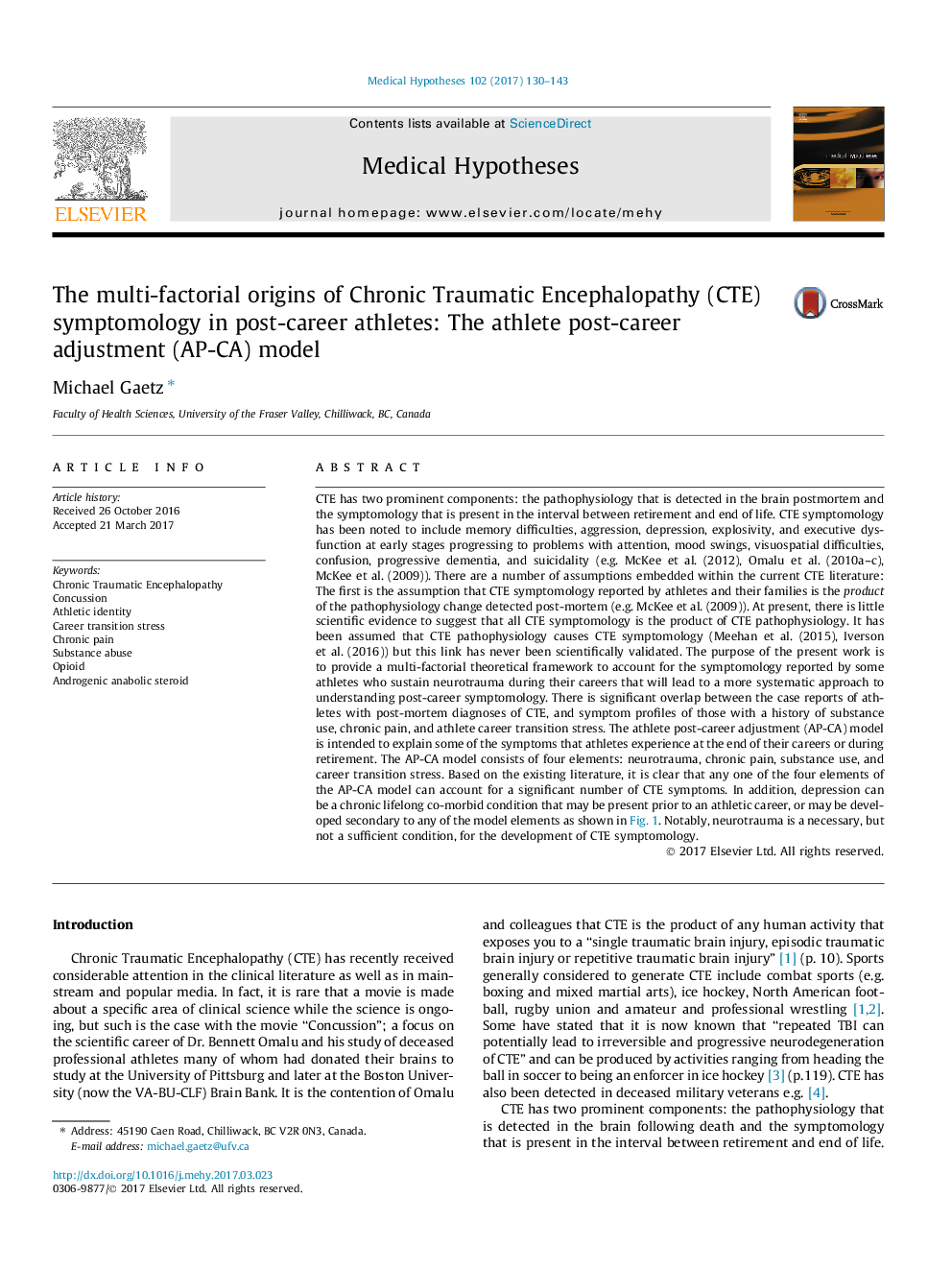| کد مقاله | کد نشریه | سال انتشار | مقاله انگلیسی | نسخه تمام متن |
|---|---|---|---|---|
| 5548510 | 1556543 | 2017 | 14 صفحه PDF | دانلود رایگان |

CTE has two prominent components: the pathophysiology that is detected in the brain postmortem and the symptomology that is present in the interval between retirement and end of life. CTE symptomology has been noted to include memory difficulties, aggression, depression, explosivity, and executive dysfunction at early stages progressing to problems with attention, mood swings, visuospatial difficulties, confusion, progressive dementia, and suicidality (e.g. McKee et al. (2012), Omalu et al. (2010a-c), McKee et al. (2009)). There are a number of assumptions embedded within the current CTE literature: The first is the assumption that CTE symptomology reported by athletes and their families is the product of the pathophysiology change detected post-mortem (e.g. McKee et al. (2009)). At present, there is little scientific evidence to suggest that all CTE symptomology is the product of CTE pathophysiology. It has been assumed that CTE pathophysiology causes CTE symptomology (Meehan et al. (2015), Iverson et al. (2016)) but this link has never been scientifically validated. The purpose of the present work is to provide a multi-factorial theoretical framework to account for the symptomology reported by some athletes who sustain neurotrauma during their careers that will lead to a more systematic approach to understanding post-career symptomology. There is significant overlap between the case reports of athletes with post-mortem diagnoses of CTE, and symptom profiles of those with a history of substance use, chronic pain, and athlete career transition stress. The athlete post-career adjustment (AP-CA) model is intended to explain some of the symptoms that athletes experience at the end of their careers or during retirement. The AP-CA model consists of four elements: neurotrauma, chronic pain, substance use, and career transition stress. Based on the existing literature, it is clear that any one of the four elements of the AP-CA model can account for a significant number of CTE symptoms. In addition, depression can be a chronic lifelong co-morbid condition that may be present prior to an athletic career, or may be developed secondary to any of the model elements as shown in Fig. 1. Notably, neurotrauma is a necessary, but not a sufficient condition, for the development of CTE symptomology.
Journal: Medical Hypotheses - Volume 102, May 2017, Pages 130-143